“It’s not abnormal for us to deal with wildlife calls – but they’re usually about relocating foxes or bears,” said Kim Bryson who is Site Environmental Lead for the Keeyask Generation Project. “This was a new one for us!”
She’s referring to the call her group received the other day from a contractor telling them they’d seen a frog hopping around in the powerhouse.
“It was a head scratcher,” said Kim. “We could not figure how there could be a frog in Keeyask in January.”

Hard to imagine finding a frog inside the Keeyask powerhouse.
They contacted Rob Berger, wildlife biologist on contract for the project, who said all frogs should definitely be in hibernation right now. But different species of frogs hibernate in different ways, so he had to see a picture of the frog to identify it.
Frog hunt
“It created quite a buzz in the powerhouse. Everyone was keen to help find the frog,” said Kim.
As it turns out, not one, not two, but three frogs were discovered when the wooden cover on a drain was pried up.
“There was some stagnant water in there, so I think they were trying to make it a home,” said Kim.
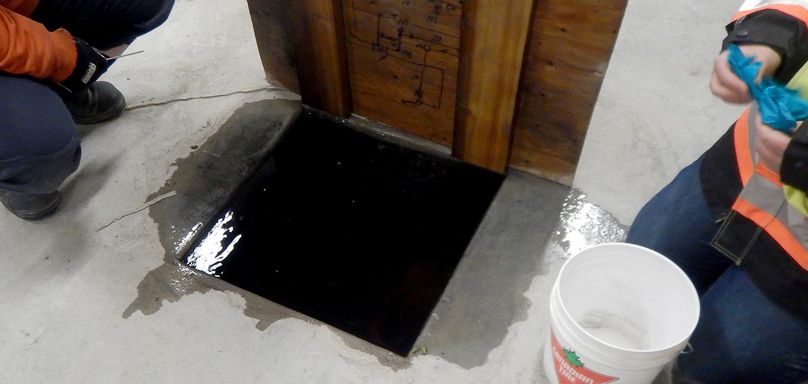
The wooden drain cover in the Keeyask powerhouse where three tree frogs were attempting to live when they came out of hibernation.
Enlarge image: A wooden drain cover in the Keeyask powerhouse.
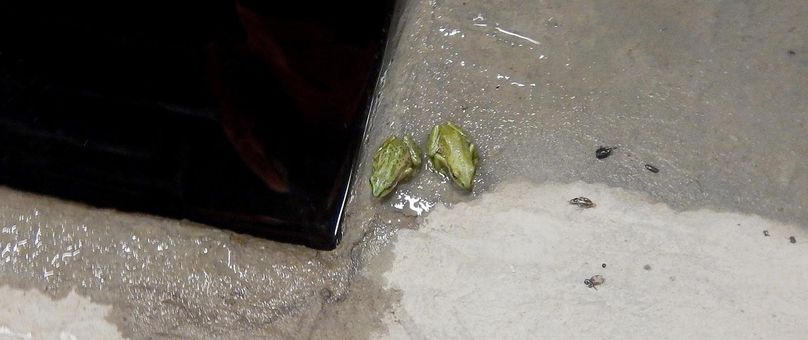
Two of the frogs found under the drain cover.
Enlarge image: Two Boreal Chorus tree frogs sit in water next to the drain cover.
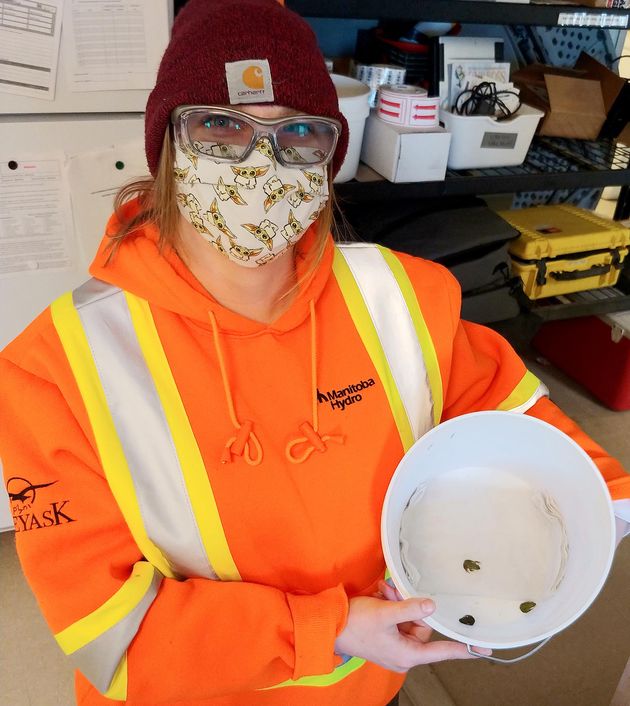
Good things come in threes. Samantha Line displays the success of the powerhouse frog hunt.
Samantha Line and Marney Ritchot were the two Environmental Inspectors who rescued the frogs – which Rob later identified as Boreal Chorus Tree Frogs.
This species of frog normally hibernates under the snow next to the ground.
“Our best guess is that these three must have hibernated in some equipment or supplies stored outside which was later brought inside. At that point the frogs likely thawed out and came out of hibernation,” said Kim.
Kim’s team was going to take them back outside and make a burrow for them so they could go back into hibernation, however Rob was concerned that the frogs had likely depleted too much of their energy while awake and active inside the powerhouse. If that was the case, they wouldn’t survive the winter in hibernation without eating first.
Picky eaters
But giving them food isn’t a simple solution. Unfortunately, Boreal Chorus frogs feed on live insects, which are hard to come by at Keeyask in January.
Out of the powerhouse and into the fridge
Kim was advised to put the frogs in the fridge to slow down their biological processes.
“We’ve made them a little habitat for now and Rob is in the process of trying to source some ¼ inch live crickets from a pet store or a zoo, as well as a terrarium to keep them in,” said Kim. “As soon as we get the supplies, we’re going to have to feed each frog individually.”
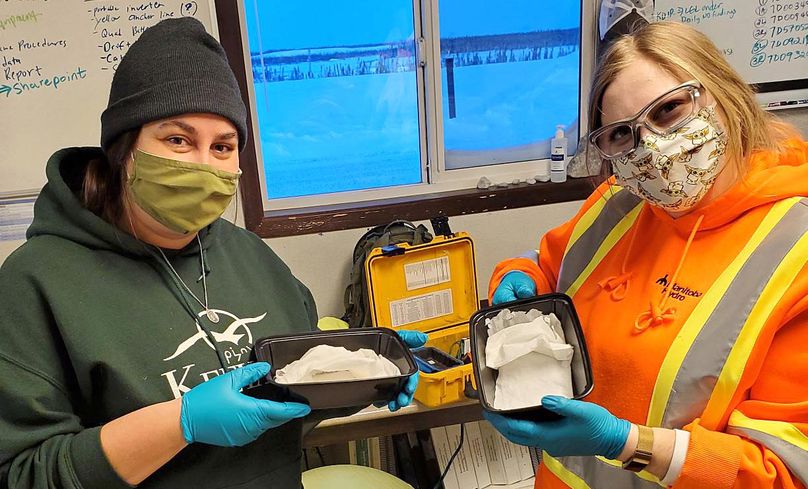
Marney Ritchot (left) and Samantha Line (right) hold the little habitats made with damp paper towel that will serve as temporary frog sleeping quarters.
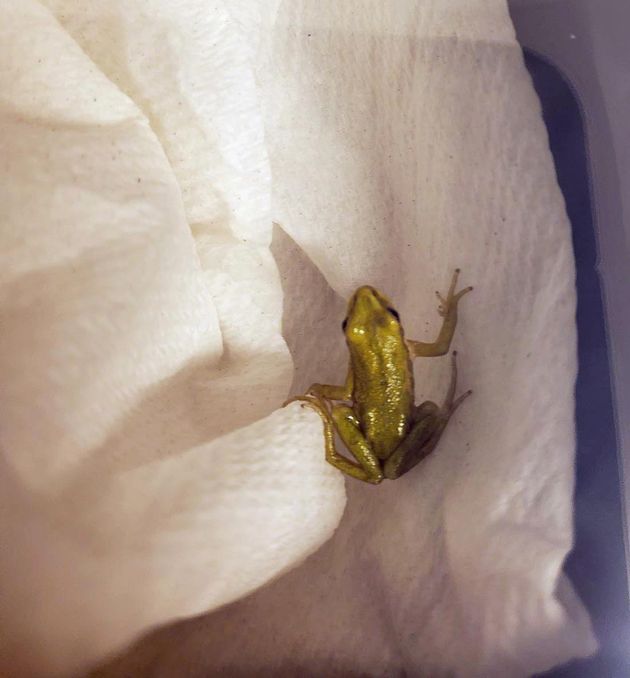
One of the frogs sitting on a damp paper towel in his temporary habitat.
Enlarge image: Tiny Boreal Chorus tree frog sits on a damp paper towel.
It takes three or four days to feed each frog: One day to let them wake up, one day to feed them a cricket or two, one day to observe and feed more if needed, one day to let them digest, and then back into the fridge to sleep.
“This should give them enough energy to survive the winter in the fridge until April,” said Kim. “Right beside our lunches and soil and water samples!”
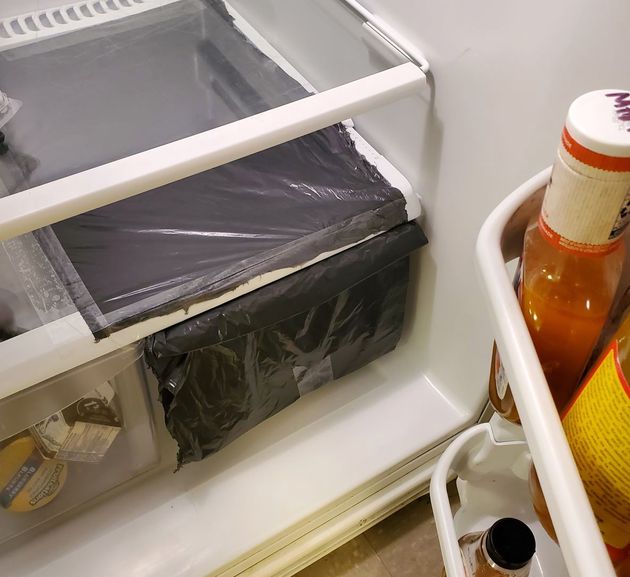
Hope no one “eats their greens” in this case!
Enlarge image: An open fridge displays a darkened drawer where the frogs are kept.
The event was an exciting twist to the team’s usual workday which involves monitoring to ensure everyone working on the Keeyask Project are following the environmental protection plan requirements.
“My colleague Samantha has joked that the whole experience has been quite ‘ribbiting’,” laughed Kim.



